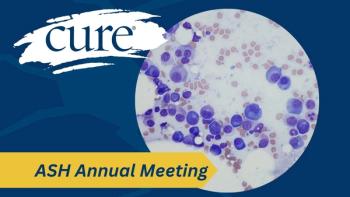
Decisions Regarding Maintenance Therapy in Multiple Myeloma
Transcript:
C. Ola Landgren, MD: After induction therapy has been given, we now, increasingly, use a term called minimal residual disease, either negative or positive. After completion of these combination cycles of therapy, if a person is MRD-negative—many patients are, these days—they may choose to collect their stem cells, keep them in the freezer, and not do the transplantation (melphalan chemotherapy). After the collection, they go straight to maintenance. For patients who are MRD-positive or have even more disease in the bone marrow, we strongly recommend the transplantation. And for full disclosure, there are many centers that still recommend transplantation for patients who are MRD-negative. But there are a lot of patients who question that. There are patients who are not candidates for transplantation. I talked to you about that. If we check their MRD status after a combination therapy is given, they can either be positive or negative, obviously.
So, going forward, after that the next question is, could therapy be stopped? Or should there be a continuation? Maintenance is something that we are using in the United States, usually until progression or if there is a toxicity. Outside of the United States, there are many restrictions in terms of how long insurance will pay for that therapy. Some patients choose not to do maintenance. You and I talked about this, and you chose not to do maintenance.
Aurora Torres: That’s correct. I had so much chemotherapy, during my stem cell transplant and prior, that I wanted to give my body a rest. I elected not to go into maintenance.
C. Ola Landgren, MD: We talked about this a lot, and I said to you, “There is a little bit of conflict in literature.” At the time, when we had to make this decision, there was a conflict in the literature as to whether that impacted survival or not. The literature said that the progression-free survival was longer, but really that’s terminology that just means that the disease stays away slightly longer. I also told you that if the disease were to come back, we could re-treat it. So, if it lasts longer with maintenance and we have to re-treat—if it comes back or if it lasts slightly shorter without maintenance—we re-treat it. It will be the same re-treatment. You said, “I don’t want to be on any therapy, at all.” So, you opted out.
Aurora Torres: Right, I did.
C. Ola Landgren, MD: That was the right decision for you. A lot of people choose to do that.
Aurora Torres: Yes, for me that was the right decision.
C. Ola Landgren, MD: If I look in my clinic, today, and if I think to 10 years back, an increasing number of people probably opt to do maintenance. But there are people, like you, who choose not to do so. We are just different, in our opinions. And if the disease comes back, we can always restart therapy. In your case, you chose not to do maintenance.
Either with or without maintenance, the follow-up would be the same. We would still see each other, and we would still monitor your blood tests. Without maintenance, in your case, we decided to check the labs. First, we decided to do about a 1-month interval. Then I gave you the option to do either 1 or 2 months. And then I gave you the option to do 2 or 3 months. That’s usually how we follow, after completion of the transplantation. Or if the combination therapy is given after collection and there is no transplant, we would do those intervals. What we are really looking for is a series of markers. One of them is the monoclonal protein. Eighty percent of patients with myeloma have an M-spike. At disease presentation, you did have an M-spike. We also would look for light chains, the kappa and the lambda light chains. We’re also tracking a lot of other markers. We are looking at kidney function and liver function. We’re looking at electrolytes and calcium.
We’re looking at the complete blood count—meaning the red cells, the white cells, and the platelets. And we’re looking at other markers of cell proliferation. So, every time we saw each other, I ran that same battery. In practice, I did not do 24-hour urine, each and every time. We would do that at the baseline diagnosis and then we would track in the blood. The literature today suggests that the need for 24-hour urine, over time, is not really supported. So, the blood test would be sufficient.
Transcript Edited for Clarity




